Bye Josip Pešut
This is continuation of article explaining how to get to using complex chord through mere practice. In past article, I explained how I look at chord progressions and melody lines. Now we're going a bit deep in that subject.
Let's take C, Am, Em, Em chord progression, and let's play it fingerstyle of some sort. Pick bass (lowest) notes with thumb, and other notes with other 4 fingers of your right hand.

Now, our focus will be on the 3rd melody line (or, melody line on 3rd string). In this moment it looks like this:

Let's change it to this:

Now, let's bring all the other notes back:

We got lots of new chords, without even knowing! And that's the sole purpose of this view at chord progressions; to make more interesting chords in chord progressions without having to initially memorize all the chords that can be used in those progressions. Of course, it is very useful to learn those chords afterwards. I will explain the new 4 chords we got:
C7M (no5)
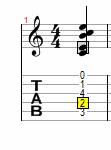
This is C major chord that has major 7th instead of perfect 5th (which would be open G string), and it has (no5) mark, because it obviously lacks perfect 5th, which all basic major and minor chords have. It sounds dreamy and positive.
C6 (no5)
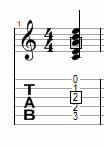
Again, this is C major chord with major 6th instead of perfect 5th. This chord can be also looked at as Am chord with C in bass (Am/C), but in this case it is C6 (no5). This one carries optimistic and positive vibe to it, with unresolved statement, because of major 6th.
Amadd9
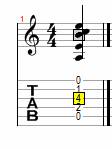
This is Am chord with added 9th (B note on 3rd string) instead of octave. This one is pretty common in sad songs.
Esus4
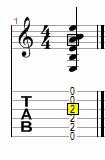
Sus chords generally don't have a 3rd which would define if the chord's major or minor, so it's simply suspended 4th (4th on higher octave) instead of major or minor 3rd. This one just waits for some kind of resolution, which can be done by playing standard E or Em afterwards.
Ok, now, let's get back to our chord progression. Let's change 2nd melody line (on 2nd string) now. It looks like this originally:

Let's change it to this:

If we add up all the other notes, we'll get this:

More new chords! It's advisable to always write out all the new chords, and how they sound individually.
Cadd9
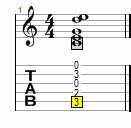
This is simple C major with added 9th (D note on 2nd string) instead of octave. That 9th makes the chord more calming, but the chord is quite stable – it doesn't ask for resolution, but you can always resolve the 9th on the octave.
Asus2
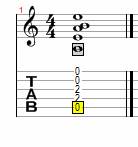
Though, this may seem to you like Aadd9 chord, it's not, because it doesn't have the 3rd. B note represents 2nd as well as 9th, so now, this is suspended 2nd. Try resolving B note on 2nd string to C, or C# note on 2nd string, and you'll hear the nature of sus chord.
Emadd13-
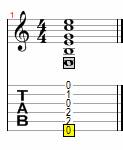
This is Em chord with added minor 13th (or minor 6th on higher octave).
Em7
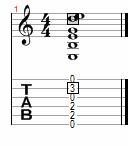
This is Em chord with minor 7th. 7th are often found in chords in blues and funk. Though, they are enough ambiental by themselves.
Now, let's try to combine melody line changes of our chord progression. Let's alter 1st and 2nd melody line simultaneously. Originally, they look like this:

Now they look like this:

So, new outfit of our chord progression looks like this now:

Now, we got some pretty cool chords here:
Cadd9(#11)
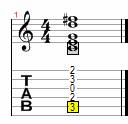
This chord is C major with added 9th (D note on 2nd string) and sharp 11th (F# note on 1st string) (sharp 4th on higher octave). That sharp 4th is signature to lydian mode. Try resolving it to G note. It's ambience is amazing. Pure dream.
Am7
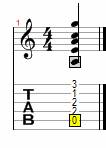
This is Am with added minor 7th on higher octave (G note on 1st string).
Am6
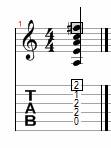
This is Am with added major 6th on higher octave (F# note on 1st string).
Em7add9
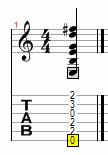
This is Em chord with minor 7th (D note on 2nd string) and added 9th (F# note on 1st string).
Emadd9(b6)
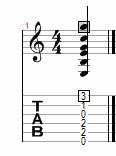
This is Em chord with added 9th (F# on 1st string) and flat 6th (C on 2nd string). Try playing this progression: Em7add9, Emadd9(b6) and then Em. You will clearly see how each of those melody lines resolve each other.
I leave up to you to realize which way works better for you – learning a library of chords and how they work in each progression, and then implement them, or changing the melody lines and have them in your ears, meaning that you can hear their change before you actually do it. For me, second way is much easier to work with than first, but the best thing for me, which I realized, is to combine both of them. You just have to be fully into what you're playing.
Go to first part: Spicing The Chords
Official Josip Pesut site: www.josippesut.com
Visit the site and enjoy playing Josip's 'Licks of the month'!
Subscribe to newsletter to get free guitar lessons!
